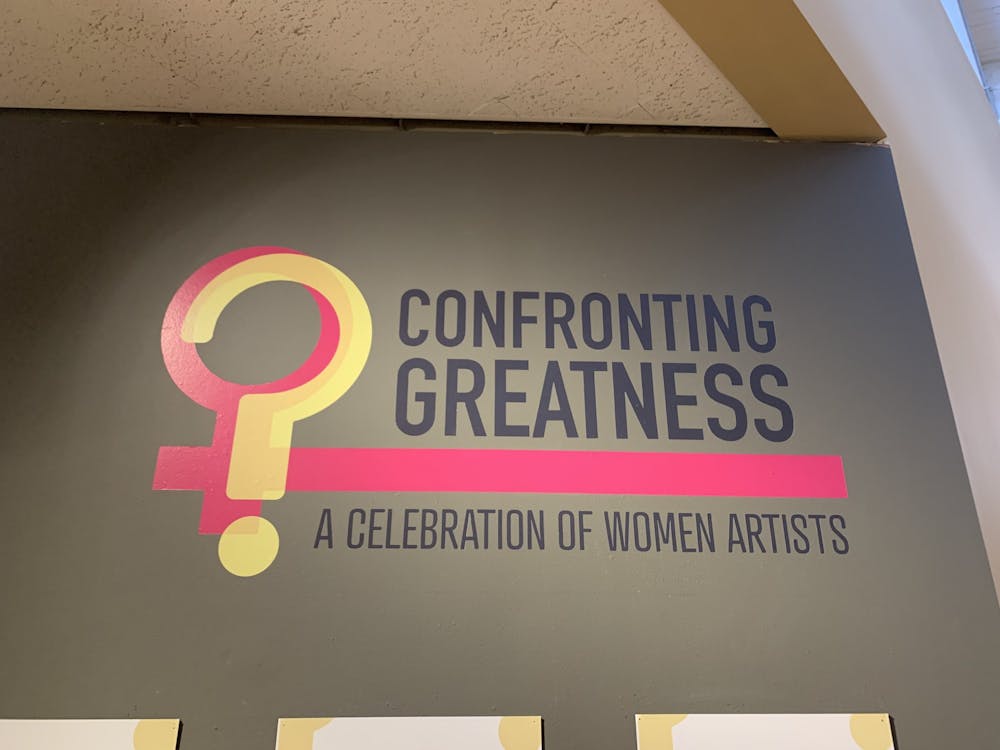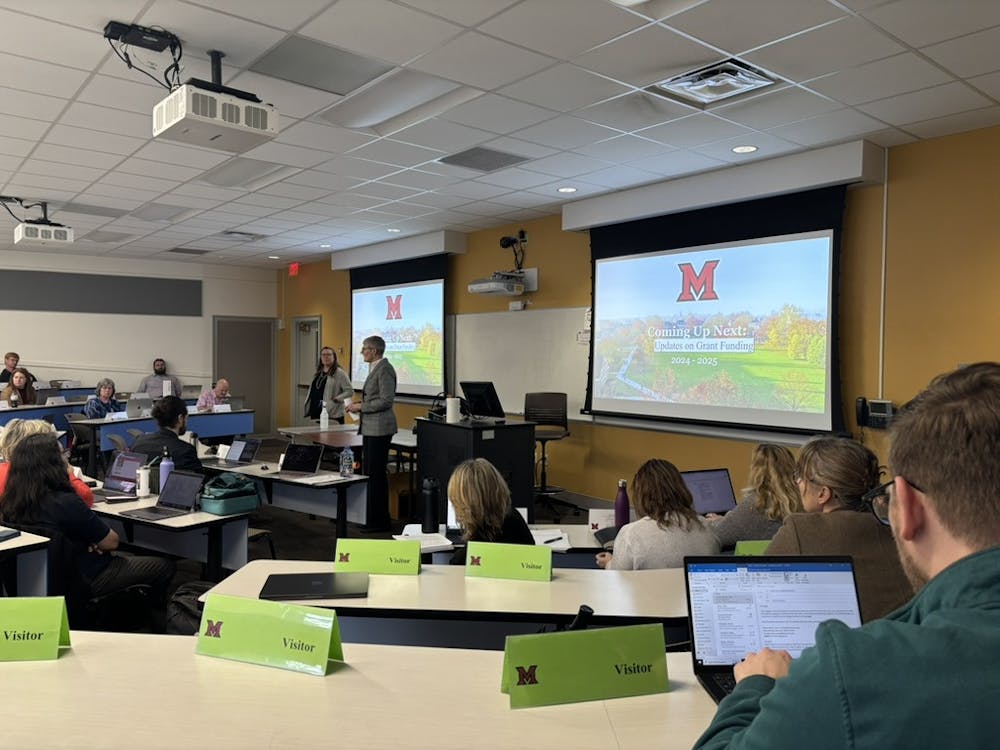In 1971, American art historian Linda Nochlin asked an enduring question of the art world in her influential essay, “Why Have There Been No Great Women Artists?” Why is the art world male dominated? Fifty years later, Miami students encounter the same question, celebrating years of progress and the room left to grow.
The Miami University Art Museum’s new student-curated exhibition by the art history capstone, “Confronting Greatness: A Celebration of Women Artists,” explores women’s roles in art history and the intersectionality that has grown throughout the decades.
The exhibition is broken into three sections: Woman/Artist, The Aesthetics of Making and Bodies and Expectations. Each speaks to a crucial theme of women in art history.
Erin Adelman, a senior majoring in art history and creative writing, catalogued an Audrey Flack piece for the exhibit. To her, it was impressive to see Flack’s distinct style and constant claiming of her identity as a woman and an artist, despite her “masculine form” in the painting she chose.
“The first section, which is where the art I researched is, this is about women dealing with their identities,” Adelman said. “Normally, the idea of being an artist is attached to being a man.”
In the Aesthetics of Making section, Adelman explained how even the tools artists used were gendered.
“Historically, women haven’t had a place in certain types of artwork,” Adelman said. “They were doing what was accessible to them which meant [they were] weaving [or] sewing, which were considered ‘craft works’ and not always taken seriously compared to painting or sculptures. Some artists reclaim these materials, while others stretch and work beyond it.”
Annie Dell’Aria, assistant professor of art history, led the art history capstone class for the first time this year. The course is always offered in the fall to curate a spring exhibition. Even through the challenges of an online course, Dell’Aria said this exhibition is a unique experience highlighting specifically female artists.
“How many times can you remember having gone to a major exhibition where it was all women?” Dell’Aria said.
Realizing this year was the 50-year anniversary of Nochlin’s historic essay, Dell’Aria saw it as an opportunity to create a space for the underrepresented group of women artists.
“It’s just a fact, when you go to an art museum, the majority of art on display is primarily men [artists],” Dell’Aria said. “I saw this as an opportunity to claim a space for women artists and the students ran with it.”
Dell’Aria said the class came up with “Confronting Greatness” to represent not only the confrontation of their peers viewing the works on display, but also how women confronted their identities as both artists and women.
Enjoy what you're reading?
Signup for our newsletter
“The title had that physical encounter that we really liked,” Dell’Aria said. “It points to that original essay, but it also opens up lots of other questions.”
Jason Shaiman, curator of exhibitions at the Miami University Art Museum, worked with the class to access works from the museum’s collection. He said the exhibit speaks to more than just one type of feminism.
“It looks at the individual artists represented, but it also looks at the composite perspective on the challenges women artists have faced,” Shaiman said. “Some Black, Indigenous and people of color artists in the exhibition have a larger story to tell about struggles in the art world from being both a woman as well as a person of color.”
Intersectional representation was also a goal of the students when curating. Another student in the capstone, Jane Keady, a junior majoring in art history and psychology, said they strived to include not only people of color but also LGBTQ+ artists.
“Of course, it’s not perfect,” Keady said. “We’re never going to be able to represent women artists as a whole or every single intersection of women.”
Celebrating this 50th anniversary of the essay in art history, Adelman believes the art world has progressed and will continue to as academic biases are removed.
“Art as an institution is definitely progressing,” Adelman said. “We have exhibitions dedicated to women artists. People make an effort to collect from women, people of color, queer artists, who are normally not collected.”
Dell’Aria sees this exhibit as an extension of this progress. Not only are unique pieces on display, but there is a bold message being conveyed.
“It creates this acknowledgement to groups who are frequently absent from these spaces and hopefully imparts expectations of inclusion,” Dell’Aria said.
Shaiman said the exhibit will impact students regardless of their gender.
“I think the exhibition will resonate with a lot of students,” Shaiman said. “Obviously with women, but I think men will take an interest in seeing what has really changed.”
This year’s capstone looked different, due to classes being on Zoom and lacking the usual trip to New York.
“This is supposed to be a very hands-on seminar experience, and you lose some of that with Zoom,” Dell’Aria said. “A challenge was trying to cultivate ways to keep the conversation going.”
Through video calls, programs like Slack, Google Docs, Art Steps and JamBoard, students were able to collaborate on ideas to make a relevant exhibition. They worked with senior graphic design student Grace Bihl to make the graphics and bring together the exhibit.
Each student selected a piece from a list to include and wrote a catalogue description on it requiring research from many outlets.
Despite its challenges, Adelman saw this course as a useful tool for her future.
“I absolutely loved it,” Adelman said. “I want to go into museum curation and do this as a career, so it was really cool to be in a class where I did this all semester.”
The exhibition is open for in-person viewing by reservation through the art museum. The museum will also be providing virtual talks and panels regarding the exhibition throughout the semester.




